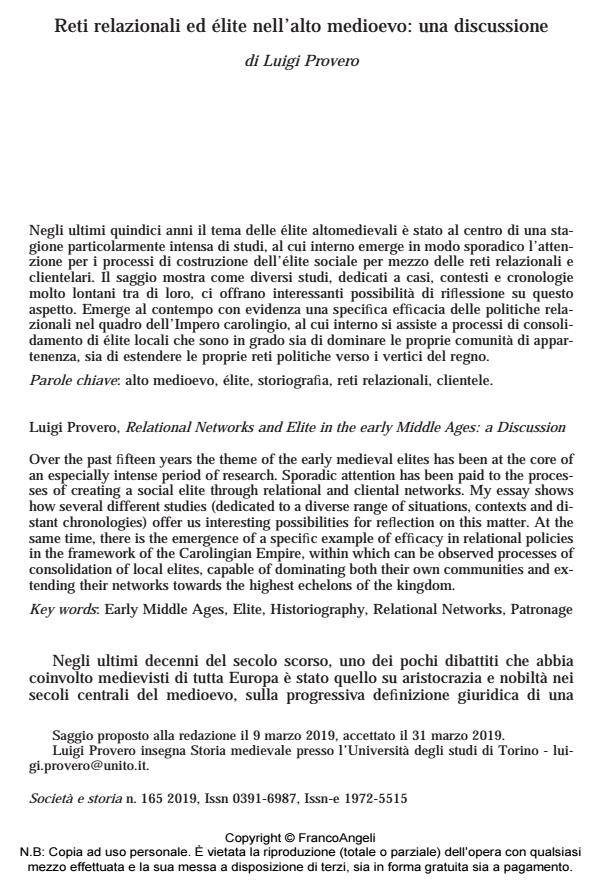Relational Networks and Elite in the early Middle Ages: a Discussion
Journal title SOCIETÀ E STORIA
Author/s Luigi Provero
Publishing Year 2019 Issue 2019/165
Language Italian Pages 10 P. 447-456 File size 41 KB
DOI 10.3280/SS2019-165003
DOI is like a bar code for intellectual property: to have more infomation
click here
Below, you can see the article first page
If you want to buy this article in PDF format, you can do it, following the instructions to buy download credits

FrancoAngeli is member of Publishers International Linking Association, Inc (PILA), a not-for-profit association which run the CrossRef service enabling links to and from online scholarly content.
Over the past fifteen years the theme of the early medieval elites has been at the core of an especially intense period of research. Sporadic attention has been paid to the processes of creating a social elite through relational and cliental networks. My essay shows how several different studies (dedicated to a diverse range of situations, contexts and distant chronologies) offer us interesting possibilities for reflection on this matter. At the same time, there is the emergence of a specific example of efficacy in relational policies in the framework of the Carolingian Empire, within which can be observed processes of consolidation of local elites, capable of dominating both their own communities and extending their networks towards the highest echelons of the kingdom.
Keywords: Early Middle Ages, Elite, Historiography, Relational Networks, Patronage
- Quarant'anni di medioevo sulle pagine di «Società e storia»: 1978-2019 Paolo Grillo, in SOCIETÀ E STORIA 178/2023 pp.697
DOI: 10.3280/SS2022-178004
Luigi Provero, Reti relazionali ed élite nell’alto medioevo: una discussione in "SOCIETÀ E STORIA " 165/2019, pp 447-456, DOI: 10.3280/SS2019-165003